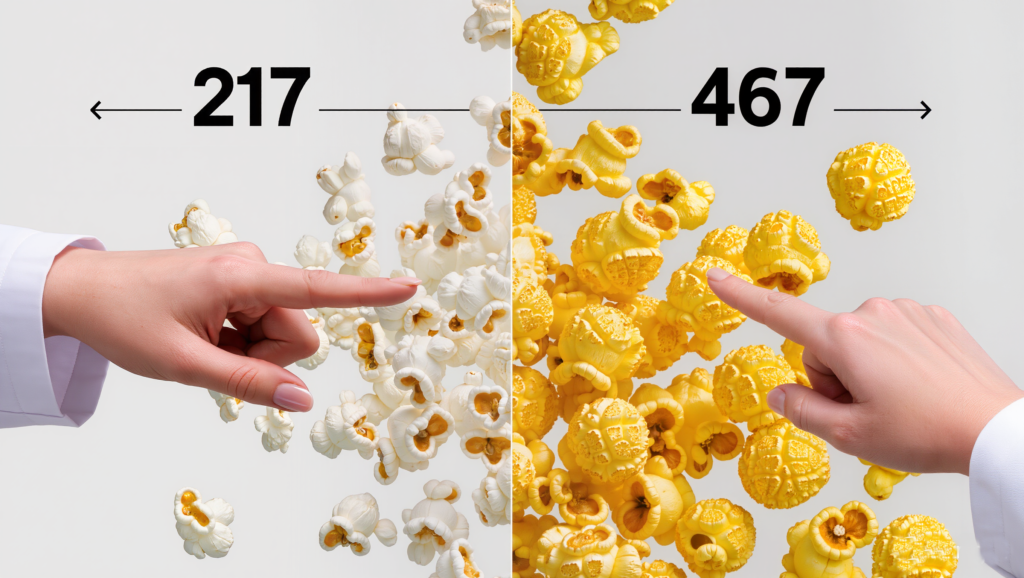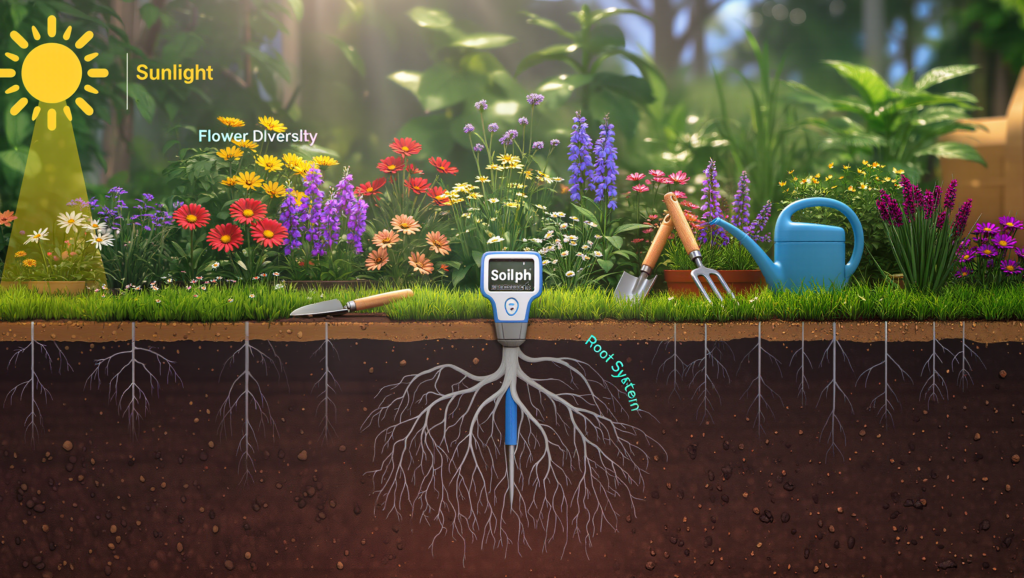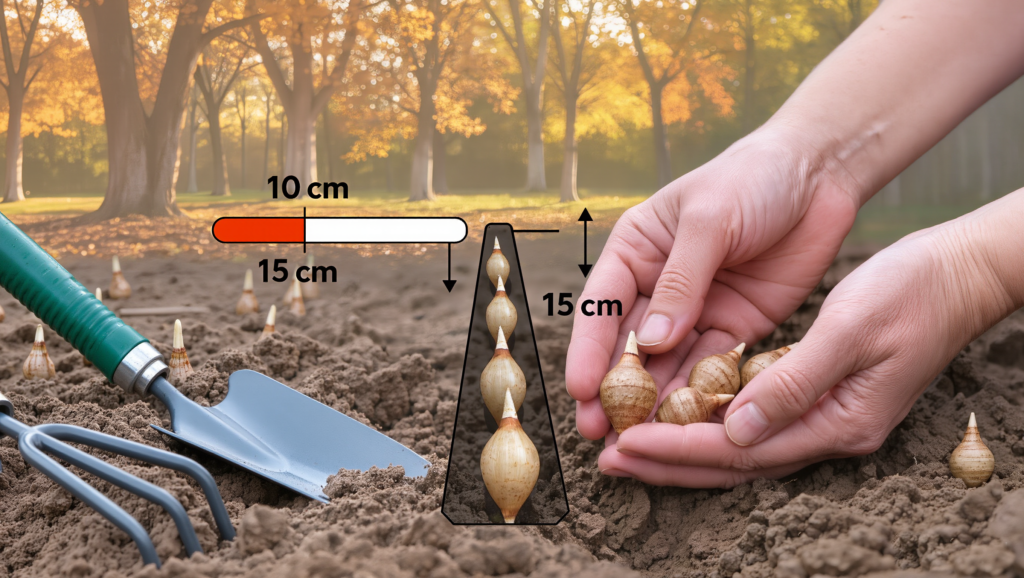نجح الفشار في تحقيق إنجاز نادر — فهو في الوقت نفسه متعة لليالي مشاهدة الأفلام ووجبة يصفها البعض بأنها “غذاء خارق من الحبوب الكاملة”.
يعتبره البعض وجبة غنية بالألياف ومنخفضة السعرات، بينما يراه آخرون مجرد قنبلة زبدة وسكر.
فما الحقيقة؟ هل الفشار حقًا وجبة خفيفة صحية، أم أن سمعته مجرد فقاعات هواء ساخن؟
الإجابة المختصرة: يعتمد على طريقة تحضيره.
في أبسط صوره — أي الفشار المحضّر بالهواء بدون زيت — يمكن أن يكون وجبة خفيفة غنية بالعناصر الغذائية والألياف وقليلة السعرات
بل ويحتوي على مضادات أكسدة تعادل تلك الموجودة في بعض الفواكه والخضروات.
لكن عندما يُغرق بالزيوت أو نكهات الزبدة الصناعية أو الكراميل، تختفي هالته الصحية بسرعة.
فيما يلي تحليل علمي شامل لحقيقة الفشار — قيمته الغذائية، فوائده، مخاطره، والخلاصة حول ما إذا كان يستحق فعلاً لقب “وجبة خفيفة صحية”.
أساسيات الفشار: ما الذي يجعله مميزًا؟
الفشار هو نوع خاص من الذرة (Zea mays) ينفجر عند تسخينه.
تركيب الحبة — التي تحتوي على لب نشوي محاط بقشرة صلبة محكمة — يجعلها “تفرقع” عندما يرتفع الضغط الداخلي.
قد يبدو ذلك تفصيلًا صغيرًا، لكنه مهم غذائيًا:
الفشار حبوب كاملة، أي أنه يحتوي على جميع مكونات الحبة — النخالة، والجنين، والإندوسبرم — مما يجعله غنيًا بالألياف والمركبات النباتية والعناصر الدقيقة.
التركيب الغذائي (لكمية 3 أكواب أو نحو 28 غرامًا من الفشار المحضّر بالهواء)
- السعرات الحرارية: 93–110
- الكربوهيدرات: 22 غ
- البروتين: 3 غ
- الدهون: 1 غ
- الألياف: 4 غ (≈15٪ من الاحتياج اليومي)
- المغنيسيوم: 40 ملغ
- الفوسفور: 100 ملغ
- الحديد: 0.9 ملغ
- المنغنيز والزنك وفيتامينات B: كميات صغيرة
بمعنى آخر، الفشار المحضّر بالهواء منخفض السعرات والدهون، مرتفع بالألياف، ويحتوي على قدر محترم من المغذيات الدقيقة — في وجبة مقرمشة ومشبعة.
بالمقارنة، تحتوي الكمية نفسها من رقائق البطاطا على أكثر من 300 سعر حراري و20 غرامًا من الدهون،
وهو فارق كبير يجعل الفشار خيارًا ذكيًا عند تحضيره بطريقة صحية.
الفوائد الصحية: لماذا يمكن أن يكون الفشار غذاءً قويًا
1. حبوب كاملة ومصدر جيد للألياف
الفشار واحد من القلائل من الوجبات الخفيفة التي تُعد حبوبًا كاملة حقيقية.
الكثير من الناس لا يتناولون ما يكفي من الحبوب الكاملة يوميًا، والفشار يمكن أن يساهم في سد هذا النقص.
كل حصة تحتوي على 3–4 غرامات من الألياف، ما يدعم الهضم، ويعزز الإحساس بالشبع، ويساعد في خفض الكوليسترول وتحسين صحة القلب.
كما أن الألياف تنظم مستوى السكر في الدم وتمنح إحساسًا أطول بالشبع.
2. غني بمضادات الأكسدة (نعم، أكثر من بعض الفواكه!)
في عام 2012، اكتشف باحثون من جامعة سكرانتون أن الفشار يحتوي على كميات مرتفعة من البوليفينولات — وهي مضادات أكسدة نباتية قوية تحارب الإجهاد التأكسدي والالتهاب.
الدراسة وجدت أن:
- الفشار يحتوي على 5.9 ملغ من البوليفينولات لكل غرام — أكثر من العديد من الفواكه مثل التفاح والإجاص.
- تتركز مضادات الأكسدة في القشرة البنية للحبة (الجزء الأكثر قرمشة).
تساعد هذه المركبات في تحييد الجذور الحرة المسببة للشيخوخة وأمراض القلب والسرطان.
وبسبب انخفاض محتوى الماء في الفشار، تكون مضادات الأكسدة فيه أكثر تركيزًا من تلك الموجودة في الفواكه والخضروات.
3. وجبة مشبعة لإدارة الوزن
يتميز الفشار بحجمه الكبير وأليافه العالية وسعراته المنخفضة،
مما يجعله من أكثر الوجبات فعالية للشعور بالشبع دون الإفراط في السعرات.
أظهرت دراسات أن من تناولوا الفشار قبل الوجبات شعروا بامتلاء أكبر وتناولوا سعرات أقل خلال اليوم.
وهذا ما يجعل خبراء التغذية يوصون به ضمن خطط التحكم بالوزن — بشرط الابتعاد عن الزبدة والملح المفرط.
4. خالٍ من الغلوتين وصديق للجهاز الهضمي
الفشار بطبيعته خالٍ من الغلوتين، ما يجعله آمنًا لمرضى السيلياك أو من لديهم حساسية الغلوتين.
كما أن أليافه غير القابلة للذوبان تحافظ على انتظام حركة الأمعاء وتغذي بكتيريا الأمعاء المفيدة،
مما يدعم المناعة والمزاج العام.
متى يصبح الفشار غير صحي؟
رغم بساطته، يمكن أن تتغير القيمة الغذائية للفشار بشكل كبير حسب طريقة التحضير.
أكثر المسببات ضررًا: الزيت الزائد، الزبدة، السكر، والملح.
1. فشار السينما: فخ الملح والسعرات
تحتوي العلبة المتوسطة من فشار السينما على ما يصل إلى 1,090 سعرة حرارية و2,650 ملغ من الصوديوم،
أي أكثر من الحد اليومي الموصى به من الملح!
المشكلة ليست في الذرة نفسها، بل في الزيوت المكررة والنكهات الصناعية والمواد الحافظة المستخدمة في آلات التحضير.
2. الفشار الميكروويفي: مريح لكنه مثير للجدل
رغم سهولته، يحتوي الفشار الجاهز للميكروويف أحيانًا على مكونات مثيرة للقلق في الزيوت أو الأغلفة.
كانت بعض العلامات التجارية القديمة تستخدم مواد مثل PFCs في التغليف، وهي الآن محظورة لضررها الصحي.
كما تم ربط مادة الدياسيتيل المستخدمة في نكهة الزبدة بمشاكل في الرئة لدى العمال في المصانع.
ورغم أن معظم الشركات استبدلت هذه المواد،
يبقى من الأفضل اختيار الأنواع العضوية، قليلة الصوديوم، وغير المعدلة وراثيًا.
3. الإفراط في السكر أو الزيت أو الملح
الأنواع المحلاة مثل الكراميل أو “الكيتل كورن” يمكن أن تفسد جميع الفوائد:
- الحصة الواحدة قد تتجاوز 300 سعرة حرارية و30 غرامًا من السكر.
- الزيوت المهدرجة تضيف دهونًا مشبعة ضارة.
لذلك، الأفضل هو تحضير الفشار في المنزل والتحكم بالمكونات.
الطريقة الأصح لتناول الفشار
لتحقيق أقصى فائدة، ينصح خبراء التغذية بالبدء بفشار بسيط — محضّر بالهواء — ثم إضافة نكهات خفيفة.
طرق التحضير المفضلة:
- الفشار المحضّر بالهواء: خالٍ من الزيت، الأقل سعرات ودهونًا (حوالي 90 سعرة للحصة).
- الفشار على الموقد بزيت الزيتون أو الأفوكادو: يضيف دهونًا صحية، لكن استخدم ملعقة صغيرة أو اثنتين فقط.
- الميكروويف المنزلي: ضع الحبوب في كيس ورقي واغلقه جيدًا وسخّنه — دون إضافات أو مواد كيميائية.
إضافات صحية مقترحة:
- رشة من خميرة التغذية لإضافة نكهة جبنية وغنية بفيتامين B.
- القليل من القرفة أو الفلفل المدخن أو مسحوق الفلفل الحار بدلًا من الملح.
- بعض الشوكولاتة الداكنة المذابة لإضافة مضادات أكسدة.
- رذاذ خفيف من زيت الزيتون البكر لتثبيت التوابل.
مقارنة مع الوجبات الخفيفة الأخرى
| نوع الوجبة | السعرات (لكل 3 أكواب) | الألياف (غ) | الدهون (غ) | الملاحظات |
|---|---|---|---|---|
| فشار بالهواء | 93 | 3–4 | 1 | لا شيء |
| رقائق بطاطا | 450 | <1 | 30+ | دهون وملح مرتفعان |
| المقرمشات (بريتزلز) | 300 | <1 | 2 | قليلة الألياف وغنية بالملح |
| مزيج المكسرات المحلى | 450–600 | 3–6 | 30+ | سكر ودهون عالية |
| الفشار المحلى | 300+ | 2–3 | 12+ | سكر وزيت زائدان |
ميزة مضادات الأكسدة: أكثر من مجرد قرمشة
تُظهر الدراسات أن قوة الفشار المضادة للأكسدة
تجعله يتفوّق على معظم الحبوب الأخرى،
حتى أن وجبة واحدة قد تحتوي على مضادات أكسدة أكثر من بعض الفواكه.
لكن اختصاصيي التغذية يحذرون:
الفشار لا يمكن أن يحل محل الفواكه والخضروات،
فهو يفتقر إلى فيتامين C والبوتاسيوم والعناصر النباتية الأخرى.
إنما يُعد مكملًا ممتازًا لمضادات الأكسدة المرتبطة بالألياف التي تعزز صحة الأمعاء والجسم.
متى يجب عدم الإفراط فيه؟
حتى الأطعمة الصحية تحتاج إلى اعتدال.
ينصح الخبراء بـ:
- حصة لا تتجاوز 3–4 أكواب.
- تجنب الفشار المحترق (قد يحتوي على الأكريلاميد).
- شرب الماء الكافي لتجنب الانتفاخ بسبب الألياف.
الخلاصة: هل الفشار وجبة خفيفة صحية فعلًا؟
في أنقى صوره — الفشار المحضّر بالهواء والمُنكّه بخفة —
يُعتبر من أكثر الوجبات الخفيفة كثافة غذائية وغنى بالألياف ومنخفضة السعرات.
كما أنه اقتصادي، متوفر، وصديق للبيئة.
لكن بمجرد إضافة الزبدة أو الكراميل أو الملح الزائد،
تختفي فوائده فورًا.
النتيجة النهائية:
الفشار يمكن أن يكون “وجبة خارقة من الحبوب الكاملة” أو “فخ الدهون والملح” — والاختيار يعود إليك.
إن كنت تبحث عن وجبة خفيفة مقرمشة وصحية تدعم القلب والهضم وتساعد في التحكم بالوزن،
فاترك أكياس الميكروويف الجاهزة، وابدأ بتحضير فشارك الطبيعي في المنزل.
ل وجدت هذه المقالة مفيدة؟
ادعمنا بمتابعتنا على وسائل التواصل الاجتماعي: Youtube, Instagram, Facebook, Pinterest, Twitter (X)
لتتابع مقاطع الفيديو والمقالات القادمة حول الصحة، التغذية، والعلاجات الطبيعية.








